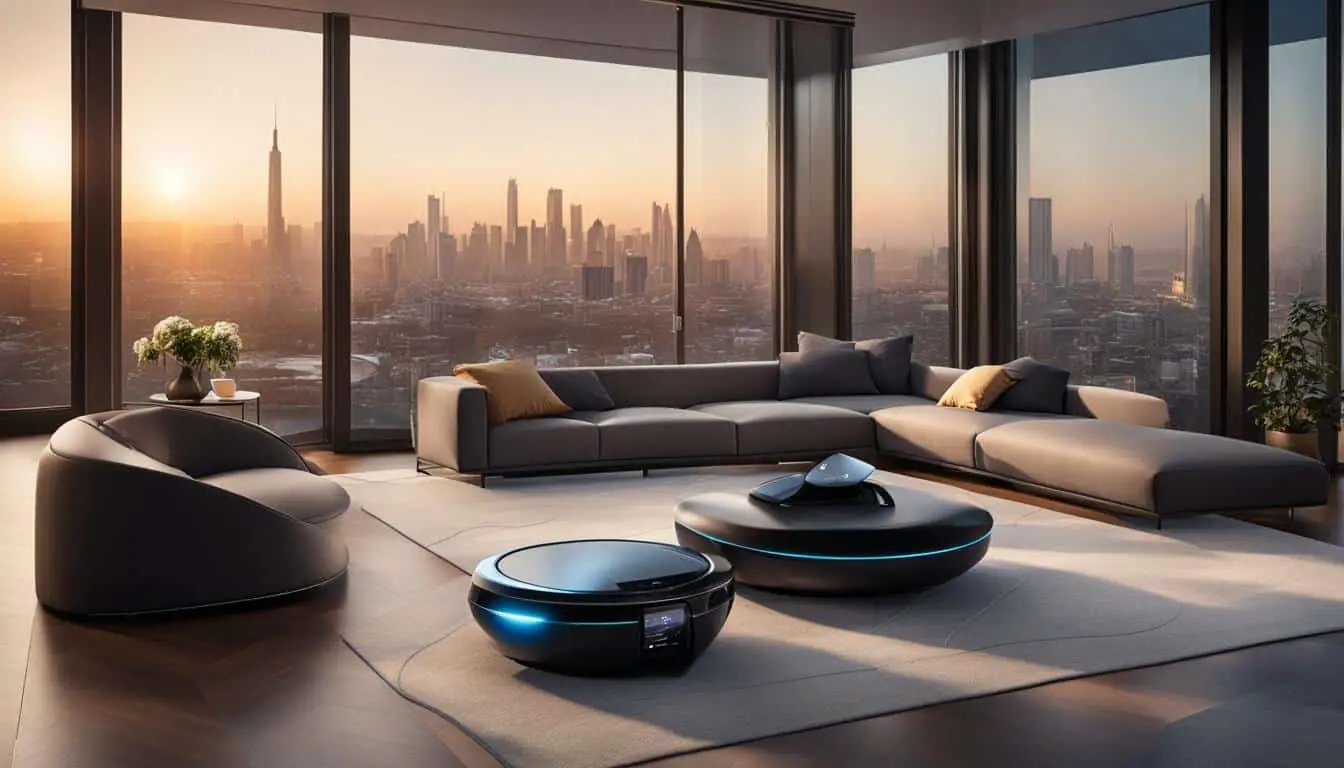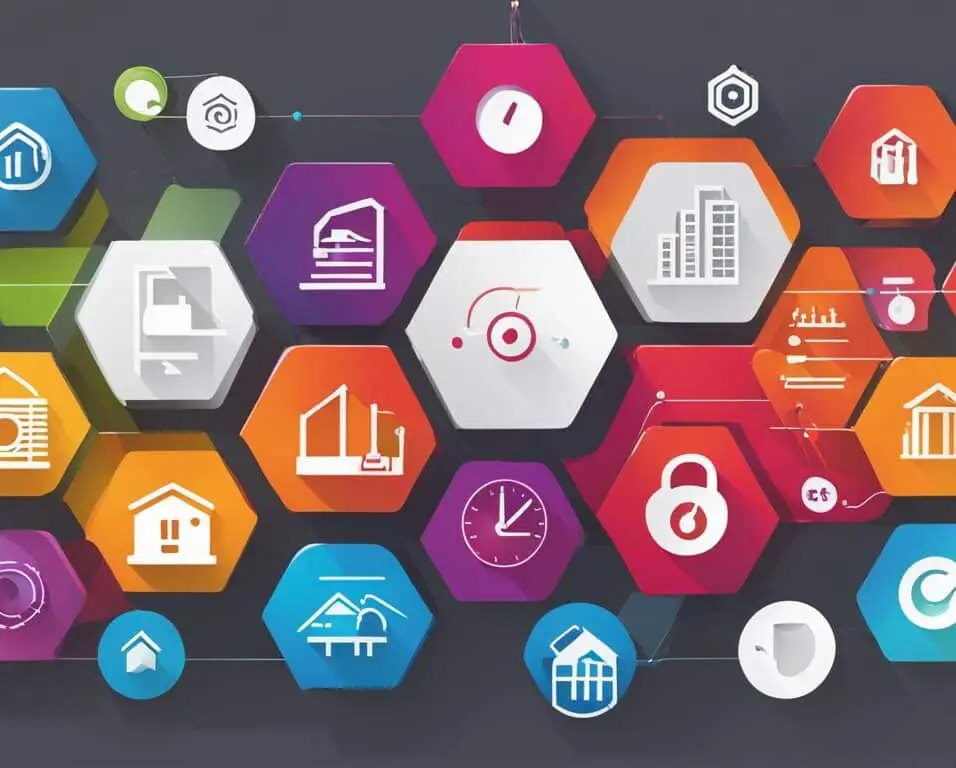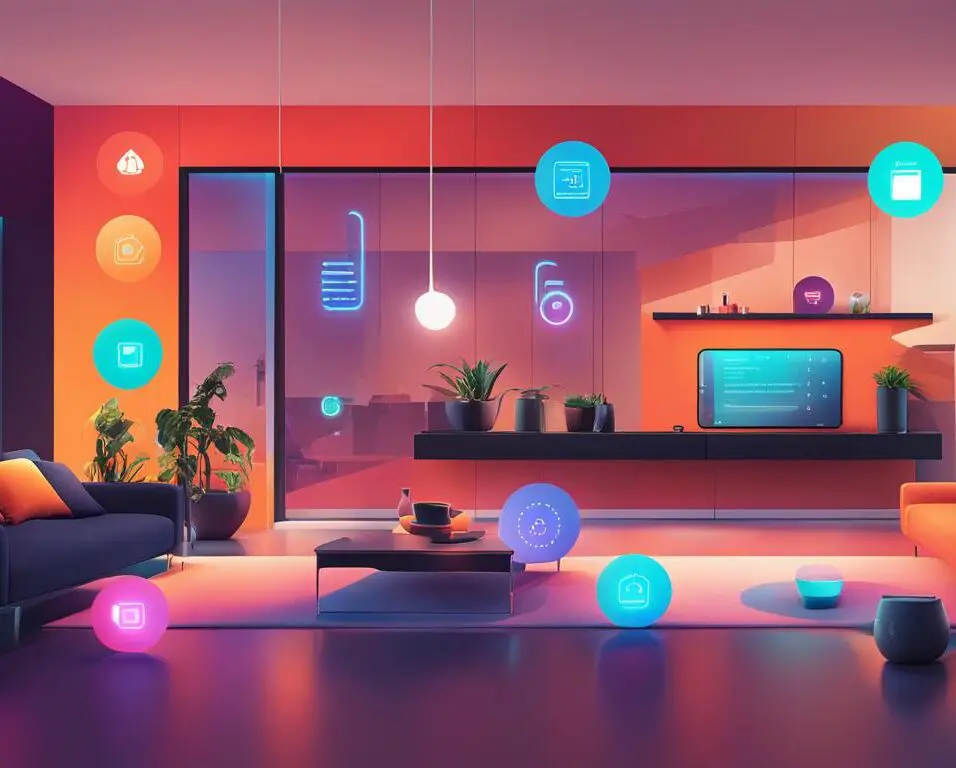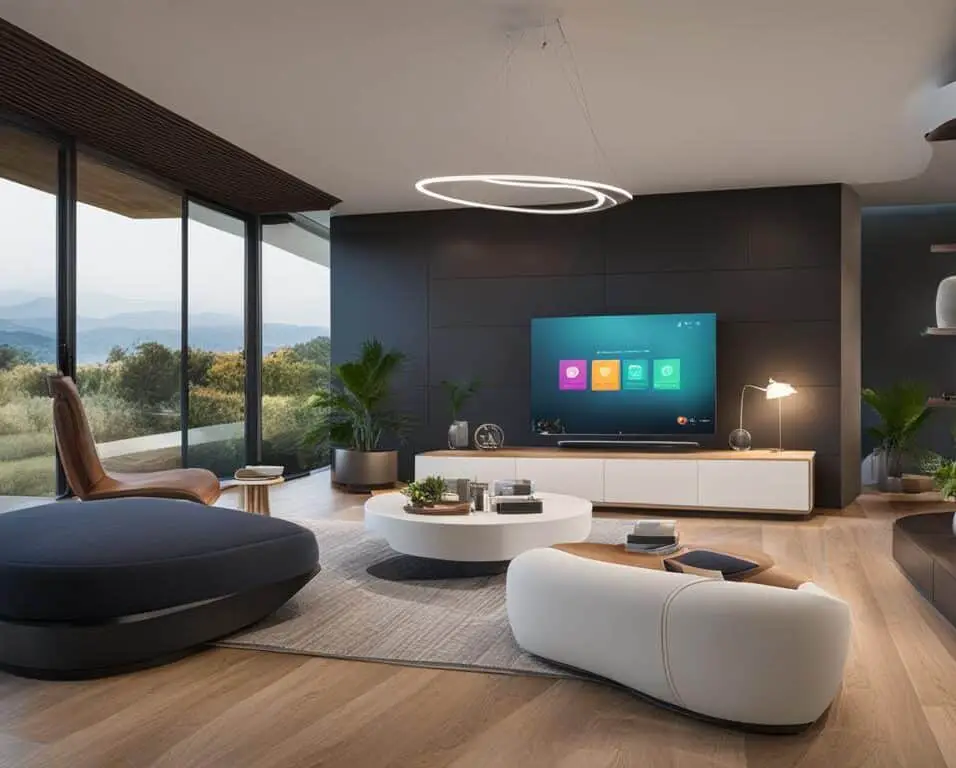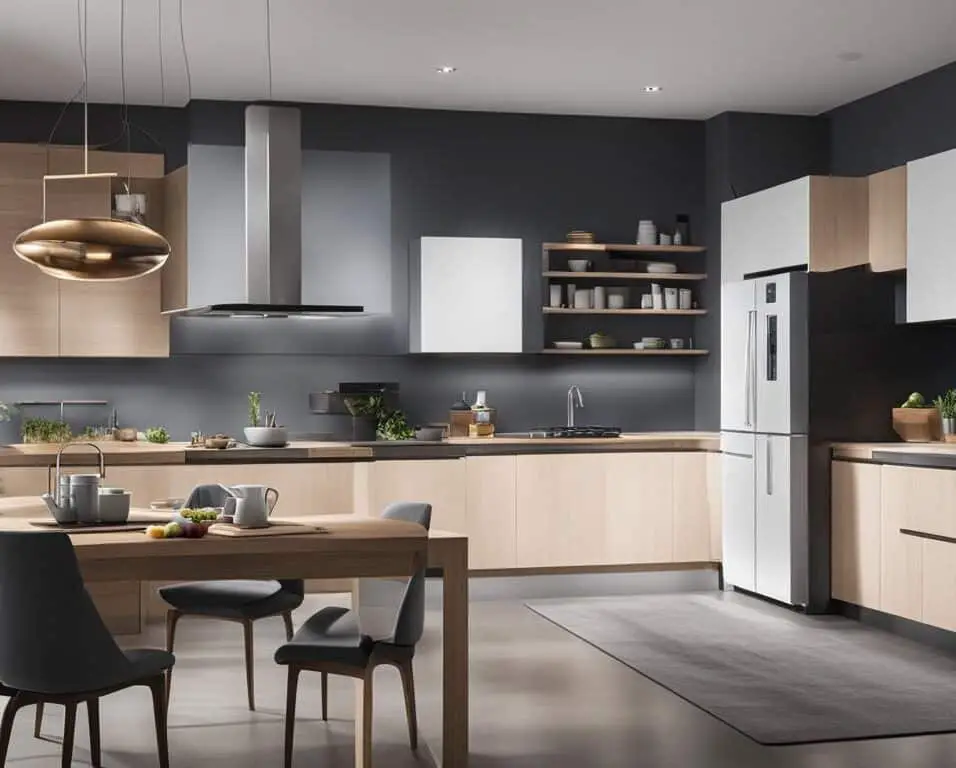Next-Level Home Automation with IoT Devices
Whether you’re a novice or a tech enthusiast, there are DIY tips for smart home automation to best meet your needs. The evolution of home automation enables compatibility between devices, but the challenge lies in achieving interoperability among different brands and protocols. The Matter protocol aims to bring all IoT devices together, but there is still no one standard that all smart home solutions follow. However, with truly IoT devices, which have built-in microcontrollers and web servers, you can connect different devices without the need for a cloud or hub. These devices work with your existing home automation setup and voice assistants, allowing for endless possibilities in controlling and communicating with other devices.
- Smart home automation is constantly evolving, allowing for compatibility between different devices.
- The Matter protocol aims to unify IoT devices, but a universal standard is yet to be established.
- Truly IoT devices with built-in microcontrollers and web servers offer seamless connectivity without the need for a cloud or hub.
- These devices can work with your existing home automation setup and voice assistants, enhancing control and communication capabilities.
- The future of home automation is promising, with efficient solutions that cater to individual needs and preferences.
The Benefits of Integrating IoT Devices in Smart Homes
When it comes to automating your home, there are several noteworthy advantages to integrating IoT devices. Convenience, accessibility, and energy savings are the key reasons why smart home automation has become increasingly popular.
Starting with lighting, incorporating smart bulbs or LED strips controlled by a hub or voice assistant is a simple and effective way to enhance your smart home experience. With just a few taps on your smartphone or a voice command, you can effortlessly adjust the brightness and color of your lights to create the perfect ambiance.
But it’s not just lighting. You can also automate various household appliances, such as refrigerators, using smart plugs. These plugs enable you to control and monitor the energy consumption of your appliances remotely, optimizing their usage and reducing unnecessary power wastage. You can even schedule your devices to turn on or off at specific times, further maximizing energy efficiency.
Battery-powered sensors are another valuable addition to a smart home. These sensors can be easily configured through an app, allowing you to monitor and control various aspects of your home, such as temperature, humidity, and security. With real-time data at your fingertips, you can ensure optimal comfort while also keeping your home safe and secure.
Moreover, smart home automation offers unprecedented convenience and accessibility for individuals with accessibility challenges. For example, automatic lighting systems can be programmed to illuminate specific areas of the house, enhancing mobility for those with limited vision. Similarly, flashing doorbells can provide visual cues for individuals with hearing loss, ensuring they don’t miss any important visitors.
One of the most significant benefits of integrating IoT devices in smart homes is the ability to gain insights into energy usage. Smart home automation systems provide valuable data on energy consumption, allowing you to identify areas of improvement and make more informed choices to save both money and energy. By analyzing this data, you can optimize your energy usage and reduce your carbon footprint.
Let’s summarize the benefits of integrating IoT devices in smart homes:
- Convenience and ease of control
- Energy savings and reduced carbon footprint
- Enhanced accessibility for individuals with disabilities
| Benefits of Integrating IoT Devices in Smart Homes |
|---|
| Convenience |
| Accessibility |
| Energy Savings |
Integrating IoT devices in smart homes offers a myriad of advantages, including convenience, accessibility, and energy savings. By embracing smart home automation, you can enhance your lifestyle while contributing to a more sustainable future.
Leveraging Advanced Tech for Smart Home Automation
Smart home automation is revolutionizing the way we live, and it wouldn’t be possible without the integration of advanced technologies. In this section, we’ll explore how big data analysis, artificial intelligence (AI), edge computing, computer vision, voice recognition, and augmented/virtual reality (AR/VR) are shaping the future of smart homes.
Big Data Analysis
With the proliferation of IoT devices in smart homes, we are generating massive amounts of data. Big data analysis allows us to extract valuable insights from this information. By analyzing patterns, trends, and user behavior, we can optimize energy usage, enhance security, and improve overall system efficiency.
Artificial Intelligence
Artificial intelligence plays a crucial role in making our homes smarter. By learning from residents’ habits and preferences, AI algorithms can configure devices to create personalized and convenient experiences. Whether it’s adjusting the thermostat to your preferred temperature or preparing your morning coffee just the way you like it, AI ensures that your smart home caters to your needs.
Edge Computing
Edge computing brings data processing closer to the source, reducing latency and improving efficiency. In the context of smart home automation, this means that data is processed locally on the devices themselves, rather than being sent to the cloud for analysis. This not only improves response times but also enhances data security by reducing the reliance on external servers.
Computer Vision
Computer vision technology enables a wide range of applications in smart homes. Facial recognition systems can enhance security by allowing only authorized individuals to access your home. Additionally, computer vision can enable fall detection, ensuring the safety of elderly or vulnerable residents. Visual analysis capabilities also enable features like object recognition, enabling your smart home to adjust settings based on the objects it detects.
Voice Recognition
Voice recognition technology has become a staple in smart home automation. With the ability to understand and interpret natural language commands, voice assistants like Amazon’s Alexa and Google Assistant allow for hands-free control of devices. From turning on the lights to playing your favorite music, all it takes is a simple command.
Augmented/Virtual Reality (AR/VR)
AR/VR technology holds immense potential for smart home automation. With AR, you can visualize and control various aspects of your home, from rearranging furniture to previewing different room designs. VR can take immersive experiences to the next level by allowing you to virtually walk through your smart home, interacting with devices and exploring different settings.
By leveraging these advanced technologies, smart home automation is becoming more efficient, personalized, and intuitive. With big data analysis, AI, edge computing, computer vision, voice recognition, and AR/VR, the possibilities for enhancing comfort, control, and efficiency in our homes are endless.

Programmable IoT Devices and Their Applications
Programmable IoT devices are revolutionizing the way we interact with our environments. These customizable internet-connected devices can be programmed to perform specific functions, providing unparalleled control and automation. From smart homes to industrial automation and healthcare, programmable IoT devices offer endless possibilities for improving efficiency and enhancing our daily lives.
Smart Homes
In the realm of smart homes, programmable IoT devices play a vital role in creating a truly connected and automated living space. These devices enable remote control and monitoring of various aspects, such as temperature, lighting, security systems, and appliances.
Imagine being able to adjust the temperature of your home while you’re still at work or turning on the lights before you arrive home, all with a simple command through your smartphone or voice assistant. Programmable IoT devices make these scenarios a reality, providing convenience and comfort at your fingertips.
Industrial Automation
Industrial automation relies heavily on the efficiency and precision offered by programmable IoT devices. In manufacturing processes, these devices optimize operations, track and manage assets, and enable predictive maintenance.
For example, sensors embedded in machinery can collect real-time data, allowing businesses to monitor performance, detect anomalies, and schedule maintenance before critical failures occur. By leveraging the power of programmable IoT devices, industrial automation becomes more streamlined, cost-effective, and responsive.
Healthcare
In the healthcare industry, programmable IoT devices have proven to be a game-changer. They enable remote patient monitoring, medication management, and telemedicine, transforming the way patients receive care.
Remote patient monitoring devices, paired with advanced healthcare applications, allow medical professionals to monitor vital signs, track medication adherence, and proactively intervene when necessary. This not only improves patient care experiences but also empowers healthcare providers to deliver more personalized and precise treatments.
A Visual Representation of Programmable IoT Devices and Their Applications
| Application | Benefits |
|---|---|
| Smart Homes | Convenience, energy efficiency, enhanced security |
| Industrial Automation | Optimized processes, asset management, predictive maintenance |
| Healthcare | Remote patient monitoring, medication management, telemedicine |
Programmable IoT devices have the potential to transform various industries, from creating smart homes to improving manufacturing processes and revolutionizing healthcare. With their customizable nature and seamless integration capabilities, these devices offer unparalleled control and efficiency. As the IoT ecosystem continues to evolve, programmable IoT devices will play an increasingly vital role in shaping the future of automation and connectivity.
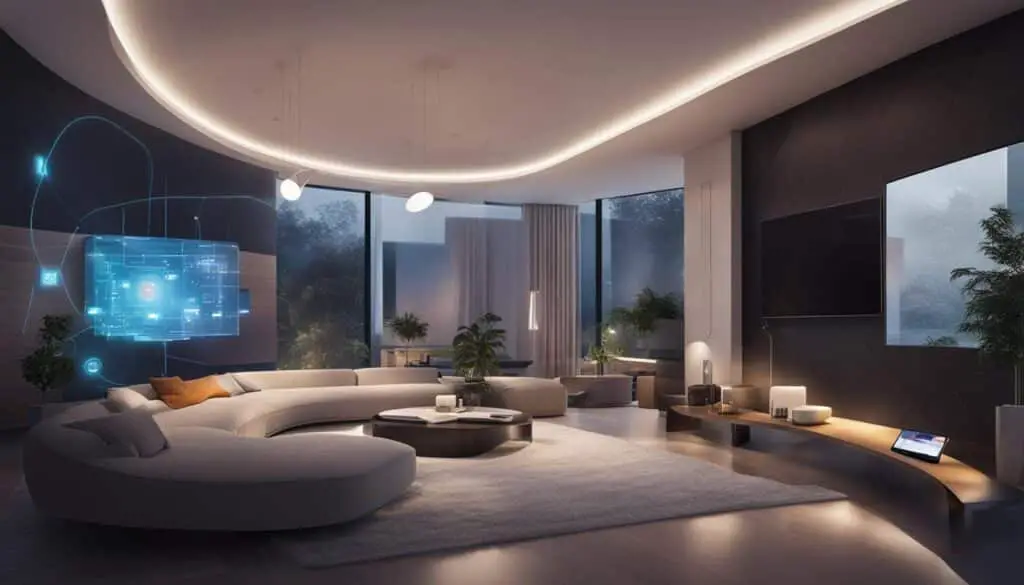
Challenges and Limitations of Programmable IoT Devices
When it comes to programmable IoT devices, there are a few challenges and limitations that need to be addressed. Two significant areas of concern include security risks and compatibility issues.
Security Risks
The interconnected nature of IoT devices exposes them to potential security breaches and attacks. Without robust security measures in place, unauthorized access and data breaches can occur, compromising the privacy and safety of individuals and their smart homes. To minimize security risks, it is crucial to implement strong encryption protocols, regularly update firmware to address vulnerabilities, and enforce strict access controls.
Compatibility Issues
Another challenge in the realm of programmable IoT devices is compatibility. The diverse landscape of IoT platforms and technologies often results in compatibility issues when integrating different devices or systems. This can pose obstacles when attempting to achieve a seamless and efficient smart home automation setup. Thorough planning and testing are necessary to ensure compatibility and minimize interoperability issues when implementing programmable IoT solutions.
To illustrate the challenges and limitations of programmable IoT devices, let’s take a look at the following table:
| Challenges | Solutions |
|---|---|
| Security Risks | Implement robust encryption protocols, frequent firmware updates, and strict access controls. |
| Compatibility Issues | Thorough planning and testing to ensure seamless integration and minimize interoperability obstacles. |
By addressing these challenges and limitations, we can pave the way for a safer and more efficient future of programmable IoT devices in smart homes.
Conclusion
Integrating IoT devices in smart homes offers a multitude of benefits, ranging from convenience and accessibility to energy savings and enhanced security. By embracing advanced technologies like big data analytics, artificial intelligence, and computer vision, smart home automation becomes even more efficient and personalized, elevating the overall living experience.
Programmable IoT devices are not only transforming smart homes but also revolutionizing industries such as industrial automation and healthcare. With their applications expanding beyond traditional boundaries, we are witnessing a paradigm shift in how we live, work, and receive medical care. The integration of IoT devices opens up endless possibilities for improving comfort, control, and efficiency in various aspects of our lives.
Despite certain challenges and limitations, such as security risks and compatibility issues, the future of integrating IoT devices for efficient smart home solutions looks promising. As technology continues to evolve, we can expect greater interoperability and seamless integration, enabling us to unlock even more potential in our homes. From personalized automation to energy conservation, integrating IoT devices paves the way for truly efficient smart home solutions that empower us to lead more connected and sustainable lives.
FAQ
How can smart home automation improve my daily life?
Smart home automation offers convenience, accessibility, and energy savings. It allows you to control various aspects of your home, such as lighting and appliances, through voice commands or smartphone apps. It can also provide insights into energy usage and help you make more informed decisions to save money and reduce your carbon footprint.
What advanced technologies are used in smart home automation?
Advanced technologies such as big data analytics, artificial intelligence, computer vision, and voice recognition are leveraged in smart home automation. These technologies enhance efficiency, personalize experiences, and offer features like facial recognition for security, natural language commands for hands-free control, and visualizations of home aspects through augmented and virtual reality.
How do programmable IoT devices work in smart homes?
Programmable IoT devices are customizable internet-connected devices that can perform specific functions based on programmed instructions. In smart homes, they enable remote control and monitoring of temperature, lighting, security systems, and appliances. They offer convenience and customization options, allowing you to tailor your home automation according to your needs and preferences.
What are the applications of programmable IoT devices?
Programmable IoT devices have wide-ranging applications. In addition to smart homes, they optimize manufacturing processes, track and manage assets, enable predictive maintenance in industrial automation, and revolutionize healthcare through remote patient monitoring, medication management, and telemedicine.
What are the challenges and limitations of programmable IoT devices?
Programmable IoT devices face security risks and vulnerabilities, which require robust encryption, firmware updates, and access controls to mitigate. Compatibility with existing systems can be another challenge due to the diverse landscape of IoT platforms and technologies. Thorough planning and testing are important to ensure seamless integration and minimize interoperability obstacles when implementing programmable IoT solutions.
What are the benefits of integrating IoT devices for smart home solutions?
Integrating IoT devices in smart homes offers numerous benefits, including convenience, accessibility, energy savings, and enhanced security. By leveraging advanced technologies like big data analytics and artificial intelligence, smart home automation becomes even more efficient and personalized, improving comfort, control, and efficiency.



